The Human Genome Project recently marked 20 years since the publication of the first full sets of human genomic sequences, an endeavor that spanned well over a decade. Today, new next-generation sequencing technologies allow for the sequencing of complex genomes within just a day or two. This has ushered in a new era of genomics that is fostering rapid, detailed and personalized insights into human genetics.
Xtalks is celebrating the International Day of Women and Girls in Science with a special overview of notable female scientists who have made revolutionary contributions to the field of genetics.
Much of the fundamental groundwork for genetics and genomic research was laid in the 20th century, with significant contributions from women scientists, some of whom worked during times when acceptance, much less recognition, of female researchers was not widespread. This despite female scientific predecessors like Marie Curie having made a significant mark in the 19th century for her pioneering work on radioactivity.
While British scientist Rosalind Franklin gained recognition for her work after her death, it also came with the revelation that her work, which helped demonstrate the double helical structure of DNA, went largely uncredited by famed DNA duo James Watson and Francis Crick. Geneticist Martha Chase was a key partner of the foundational Hershey-Chase experiment that helped confirm DNA to be the carrier of genetic information; however, it was only Hershey of the pair that went on to win the Nobel Prize in Physiology or Medicine in 1969 for the discovery.
After several such Nobel Prize snubs for female scientists, 2020 saw the Nobel Prize in Chemistry go to a female scientist duo for the first time for their revolutionary discovery of the CRISPR-Cas9 gene editing system.
Despite the obstacles and against the odds during some of the times in which they worked, there have been many women scientists who have revolutionized the field of genomics. Here is a profile of some of those brilliant women who have helped shape genetics research.
Rosalind Franklin: From Chemistry to Genetics
Born in Notting Hill, London, England to a prosperous British Jewish family on July 25, 1920, Rosalind Franklin is known for her contributions to the field of genetics with her discovery of the molecular structure of DNA. As an expert X-ray crystallographer, her now famous “Photo 51” image of DNA has cemented her place in the historical discovery of the double helical structure of the genetic code.
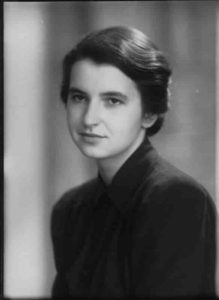
Franklin studied physical chemistry at Newnham College, University of Cambridge, graduating in 1941. She then set off to Cambridge with a fellowship she received to do research in physical chemistry. However, World War II developments led to a change in plans, leading her to serve as a London air raid warden. She also forfeited her fellowship to investigate the physical chemistry of carbon and coal, particularly the porosity of coal, for the war effort at the British Coal Utilization Research Association.
She was actually able to use the research for her doctoral thesis, graduating with a doctorate from Cambridge in 1945. She then joined the lab of Jacques Méring at the State Chemical Laboratory in Paris as a postdoctoral researcher from 1947 to 1950 where she studied X-ray diffraction technology. She developed expertise in X-ray crystallography, which came to serve as the foundation for her revolutionary DNA work. The work led to her findings on the structural changes associated with the formation of graphite in heated carbons, which proved to be of value for the cooking industry.
In 1951, Franklin joined the Biophysical Laboratory at King’s College, London as a research associate in the Medical Research Council’s (MRC) Biophysics Unit headed by John Randall, where she was made to take up work on DNA after her stints in coal research. As the only experienced experimental diffraction researcher at the college at the time, and because of growing developments in the field, Randall directed Franklin to DNA researcher Maurice Wilkins. Wilkins reassigned his graduate student Raymond Gosling to work with Franklin as her assistant.
It is often reported that Franklin and Wilkins had contrasting personalities that led to conflict between the two, with Franklin being strongly and vocally opinionated in scientific discussions compared to the quieter Wilkins, who disliked arguments and “rocking the boat,” so to say.
Despite this, Franklin carried on with her work, applying X-ray diffraction methods to gain insights into the physical and chemical composition of DNA, of which very little was known at the time. Her initial work helped her to elucidate the density of DNA, and of great significance, discover that DNA had a helical structure.
During the same time, James Watson and Francis Crick were working zealously to decipher the physical structure of DNA at the Cavendish Laboratory in Cambridge. Linus Pauling also joined in on the venture, separately, adding to the competition. While Watson and Crick initially came up with an incorrect triple helical structure, which Franklin outright rejected, Pauling made calculation errors of his own.
On the other hand, Franklin’s work, which involved generating clearer X-ray patterns of DNA molecules, was making it apparent that the structure was a polymer made up of two helices.
The critical and brash Watson is cited to have harbored views that edged on sexism, which would not be surprising given the times back then when women were often confined to certain gender roles and norms that did not allow for them to be embraced in many fields, including science. Case in point, Watson is said to have paid a visit to King’s to try to collaborate with Franklin, amidst growing threats from Pauling’s DNA work, but she rejected the offer after he offended her by saying that she lacked skill in interpreting her own data. At around the same time, in 1953, Franklin decided to leave King’s College as she was not happy working in the toxic environment, ultimately abandoning her DNA work at the college. She did write up three manuscripts on her findings before leaving.
Around the time of Franklin’s departure, the story goes that Watson went to Wilkins who sided with him and ended up showing him the coveted “Photo 51” that had been taken by Franklin and Gosling. That was an eye-opening, eureka moment for Watson — who was able to use the image, along with Franklin’s notes and X-ray crystallography data, which she apparently ended up providing herself via a short informal report that was given to Max Perutz of Cambridge University and eventually passed to Watson — to finally and correctly elucidate the double helical structure of DNA.
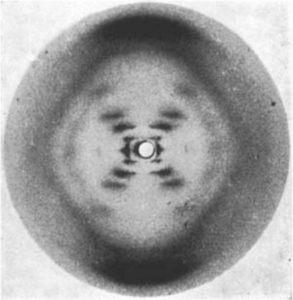
It still remains unclear whether Franklin’s work was accessed and interpreted with or without rightful permissions.
In April 1953, the journal Nature published a set of three historical papers on the structure of DNA. Without the inclusion of Franklin’s opinion or consent, it was agreed that the DNA model would be published as the work of Watson and Crick, while supporting data from Wilkins and Franklin was published as two separate papers. Franklin did not attend a celebratory party that was thrown by the men to mark the occasion.
From 1953 to 1958, Franklin worked in the Crystallography Laboratory at Birkbeck College, London, completing work on both coals and DNA, as well as beginning a project on the molecular structure of the tobacco mosaic virus. Franklin died from ovarian cancer in 1958, likely from exposure to coal during her research.
The trio of Watson, Crick and Wilkins went on to be awarded the Nobel Prize in Physiology or Medicine in 1962 “for their discoveries concerning the molecular structure of nucleic acids and its significance for information transfer in living material.”
Despite Watson and Crick having garnered widespread acclaim and credit for the historical discovery, Franklin has become increasingly recognized for her central contribution to it, often being seen as the victim of scientific cheating and robbery. This as Watson continues to make noise for the wrong reasons over his views on race, intelligence and gender, having been stripped of honorary titles and positions including ones at the Cold Spring Harbor Laboratory.
Franklin’s legacy as a female scientist who asserted herself as a leading researcher at a time when men dominated the playing field, will certainly continue to serve as inspiration for girls and women in science now, and well into the future.
Martha Chase: For the Books
The Hershey-Chase experiment is the historic study that solidified the function of DNA as the carrier of genetic information over protein.
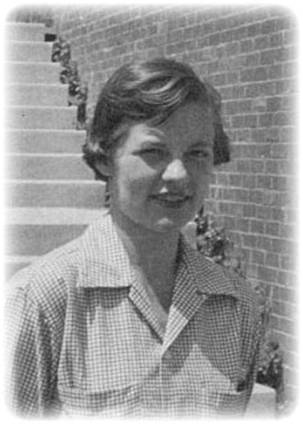
Martha Chase was an American geneticist who was part of the duo with Alfred Hershey who conducted the groundbreaking work. The work garnered Hershey the Nobel Prize in Physiology or Medicine in 1969, shared with Max Delbrück and Salvador Luria, for their “discoveries concerning the genetic structure of viruses.” Chase’s exclusion from the prize remains a mystery. Some question Chase’s intellectual contributions to the work, as well as the fact that she was a research assistant on the team and not a lead investigator. Nevertheless, her contribution is apparent given that the historic Hershey-Chase experiment includes her name. It could thus be speculated that the Nobel Prize snub may have to do with patriarchal attitudes at the time.
Chase was born in Cleveland, Ohio in 1927 and received a bachelor’s degree from the College of Wooster in 1950. She worked as a research assistant at Cold Spring Harbor Laboratory in the laboratory of bacteriologist and geneticist Alfred Hershey before going back to school in 1959, earning a PhD in Microbiology from the University of Southern California in 1964.
In California, Chase met and married fellow scientist Richard Epstein in the late 1950s and changed her name to Martha C. Epstein. The marriage ended in divorce after a few short years. After that, some personal setbacks in the 1960s led her to end her scientific career. She moved back to Ohio to live with family, and in her later years, developed dementia that led to short-term memory loss. She died of pneumonia at the age of 75 on August 8, 2003.
It was during her time in Hershey’s lab in the 1950s, pre-PhD, when she and Hershey performed the Hershey-Chase experiment, which helped confirm that DNA is the carrier and transmitter of genetic information.
The Hershey-Chase experiment was actually a set of experiments conducted by Hershey and Chase that helped them conclude that DNA served as the genetic material of a cell. While the structure of DNA had been elucidated a few short years earlier by the group of Rosalind Franklin, James Watson, Francis Crick and Maurice Wilkins, its function remained largely unknown. At the same time, it was thought that protein was the carrier of genetic information as DNA was too inert of a substance — and was also shielded away in the nucleus — to be able to harbor such a role.
In the experiments, Hershey and Chase infected bacteria with radioactively labeled bacteriophages (viruses that specifically infect bacteria), which consist of both DNA and protein. Bacteriophages inject their DNA into cells but not protein, which is mainly a constituent of their outer envelope, or capsid. Through the radioactive labels, they were able to track which of the two, DNA or protein, was injected into the bacteria.
They conducted two experiments, one with radioactive phosphorous to label DNA, and one with radioactive sulfur to tag protein (DNA does not contain sulfur and protein does not contain phosphate groups). In each of the experiments, they looked at whether the radioactive signal was found in the cell or outside the cell.
The experiment is also known as the “Waring blender experiment” as a Waring kitchen blender was used to separate the bacteria from the viruses after infection. After detachment, the mixture was centrifuged; this was done to destroy the outer membrane integrity of bacterial cells, and hence remove any phages attached to the outside of the bacteria. Meanwhile, any radioactive material that had entered the cells would be intact and detectable.
The experiment revealed that in the radioactive phosphorus sample, 40 percent of the labeled particles were removed, while in the sulfur-labeled sample 80 percent of the labeled particles were removed. Since more protein from the phages was removed off of the bacteria than DNA, the results demonstrated that DNA was able to readily enter cells and not protein. And since DNA made its way into the bacteria, it was the carrier of genetic information, and played a role in reproduction.
Despite not winning formal accolades for her work, namely the Nobel Prize, Chase’s work is certainly recognized each time a molecular biology or genetics student picks up a textbook and reads about the foundational Hershey-Chase experiment, which has her name stamped on it, quite literally.
Marie Maynard Daly: Breaking Barriers
During a time when women scientists often took a backseat to their male counterparts, people of color, namely Black people, faced extreme prejudices and discrimination around the world. However, despite the dual disadvantage of being Black and female in America during the 1940s and 1950s, Marie Maynard Daly rose to the occasion and overcame racial and gender barriers to become the first Black American woman to receive a PhD in chemistry in the US. She earned the degree at Columbia University, graduating in 1947.
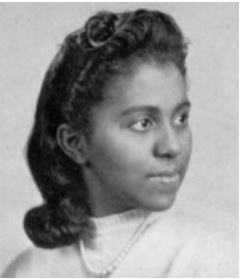
Daly was a biochemist that made significant contributions in various research areas that include the chemistry of histones, protein synthesis, the relationships between cholesterol and hypertension and the uptake of creatine by muscle cells.
Daly was born and raised in Corona, Queens in New York City to Ivan C. Daly, who had immigrated from the British West Indies and married her mother Helen Page, who was from Washington, DC. Daly’s interest in science began with learning about scientists through the books she read at her maternal grandparents’ home. She credits Paul de Kruif’s The Microbe Hunters for piquing her interest in becoming a scientist. Daly’s scientific interests also owe to her father who attended Cornell University wanting to become a chemist, but could not finish his education due to a lack of money. His daughter decided she would fulfill her father’s goals and went on to major in chemistry.
With respect to her work on DNA histones, James Watson has credited Daly’s research as contributing to research on the structure of DNA. He specifically cited her paper “The role of ribonucleoprotein in protein synthesis” as contributing to his work during his acceptance of the Nobel Prize in 1962.
Daly’s work on histones stemmed from her interest in nuclear proteins. She first developed techniques to separate the nuclei of cells in tissues to measure the amounts of purines and pyrimidines in desoxypentose nucleic acids. She was able to confirm that the only bases present in the nuclei were adenine, guanine, thymine and cytosine.
She also specifically developed fractionation methods to separate nuclear proteins from other nuclear material. She was keen on separating cellular components while maintaining their integrity and to identify their compositions.
As such, in her DNA histone studies, she was able to determine the amino acid composition of various histone fractions, and was among the first to suggest that histones were largely made up of basic amino acids such as lysine and arginine. Daly’s histone research proved to be pioneering, being fundamental to our understanding of DNA packaging, gene expression and epigenetics, among other areas in genetic research.
In addition to her nuclear work, she also delved into protein synthesis, with some of her work revealing the role of cytoplasmic ribonucleoprotein in protein synthesis. She evaluated changes in protein metabolism during feeding and fasting conditions in mice using radiolabeled glycine.
Daly developed programs to assist minorities in medical schools and graduate science programs. She also established a scholarship fund at Queens College for African Americans in commemoration of her father in 1988.
Daly’s contributions to our understanding of histones as DNA packagers and modifiers of gene expression has helped pave the way for newer areas of genetic research, such as epigenetics. As a Black female scientist, her legacy is one that will continue to inspire generations of Black women to come.
Jennifer Doudna and Emmanuelle Charpentier Pioneer with CRISPR
It seems like quite the fast-forward in time to the era of CRISPR, the revolutionary new gene editing technology that first took the genetics world by storm in 2012. That was the year scientists Jennifer Anne Doudna, PhD and Emmanuelle Marie Charpentier, PhD, published their seminal paper on the CRISPR-Cas9 gene editing system that could be leveraged as “genetic scissors,” as labeled by the committee that awarded them the Nobel Prize in Chemistry in 2020. This was the first time two women had won a Nobel Prize in science together.
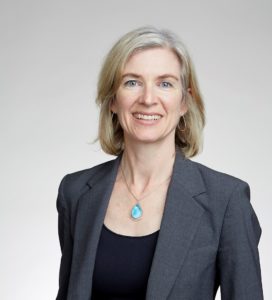
Doudna is an American biochemist who is the Li Ka Shing chancellor’s chair professor in the department of chemistry and the department of molecular and cell biology at the University of California, Berkeley. She also serves as president and chair of the board of the Innovative Genomics Institute, is a faculty scientist at Lawrence Berkeley National Laboratory, a senior investigator at the Gladstone Institutes and an adjunct professor of cellular and molecular pharmacology at the University of California, San Francisco. In addition, she has also been an investigator with the Howard Hughes Medical Institute since 1997. Doudna grew up in Hilo, Hawaii and received her PhD from Harvard Medical School in 1989.
Charpentier is a French professor and researcher in microbiology, genetics and biochemistry. She attended the Pierre and Marie Curie University (today the Faculty of Science of Sorbonne University) in Paris and earned her PhD from the Institut Pasteur. Charpentier has served as a director at the Max Planck Institute for Infection Biology in Berlin since 2015. In 2018, she founded the Max Planck Unit for the Science of Pathogens, an independent research institute.
Doudna and Charpentier teamed up after meeting at a research conference to investigate the prokaryotic CRISPR-Cas9 immune system, having recognized the presence of CRISPR (clustered regularly interspaced short palindromic repeats) DNA sequences in bacteria and archaea that could have functional effects.
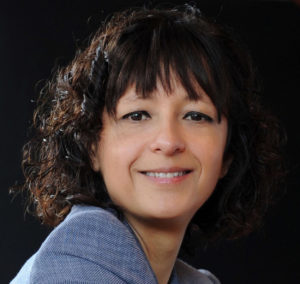
The clustered DNA repeats were also identified by other groups around the world, including Yoshizumi Ishino and his colleagues in 1987 in Japan, as well as researchers in the Netherlands and Spain in the 1990s. However, none of the groups could pinpoint a functional role for the sequences.
Doudna and Charpentier were able to successfully elucidate a role for them in prokaryotic immunity and discovered the mechanisms behind their function. They took it a step further and used the ancient bacterial system to develop a cutting-edge, precision-powered gene editing tool.
Their pioneering work has led to the “CRISPR revolution,” spurring a new era in genomics research. The revolutionary new technology is allowing for novel insights into gene functions as well as the development of CRISPR-based therapeutics for diseases ranging from Duchenne muscular dystrophy (DMD) to various cancers.
While CRISPR continues to revolutionize the field of genomics, ethical concerns pertaining to safety, access to the technology for research and medical purposes, controversy over use in embryos and informed consent among others, persist. Doudna has been quite vocal about these concerns, addressing them in lectures to help ensure that the technology is used rightfully and justly.
While the genetic revolution may have been kickstarted in the late 1970s and 1980s, due in large part to advances in technologies in molecular biology (such as PCR to name one), the foundations were laid well before that, and continue to be built upon alongside the emergence of new genomic applications and technologies.
The contributions of women in the area of genetics research have great scientific, historical and social significance. Women have been at the helm of fundamental discoveries such as the structure of DNA, through to revolutionizing the field with novel insights into ancient genetic systems and leveraging them into cutting-edge technologies like CRISPR. Despite pushbacks, exclusions, judgement, skepticism and animosity, women have fought through gender and racial barriers through the times to make those important contributions.
With extraordinary examples of women geneticists throughout history, there is no shortage of inspiration for future generations of girls and women looking to embark on scientific journeys of their own.

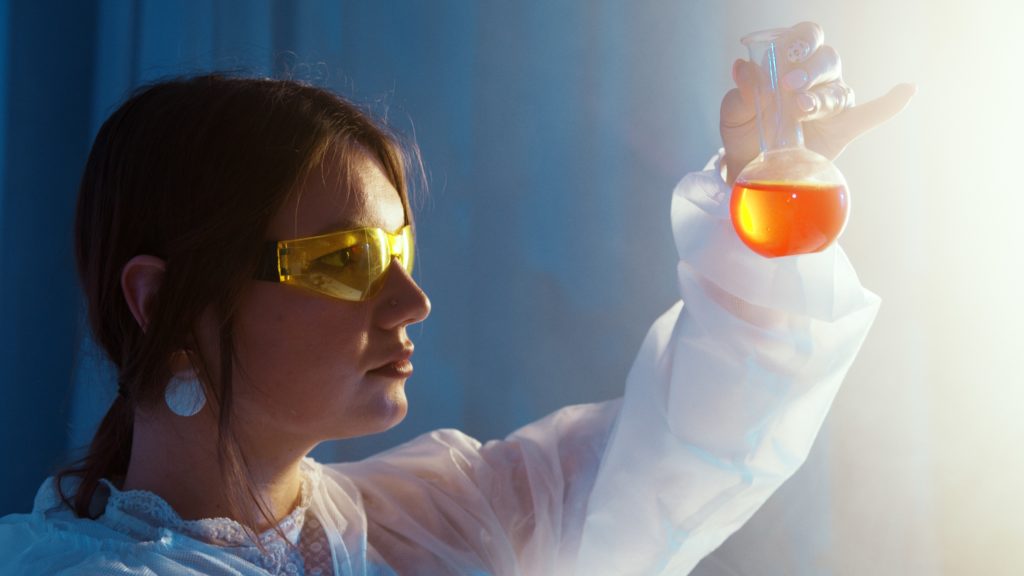









Join or login to leave a comment
JOIN LOGIN